Nuclear power delivers almost 20% of all electricity in the United States, and about 50% of all low-emission electricity. Moreover, the U.S. has almost 100 nuclear power units operating more than 90% of the time, providing a steady base of power generation we can depend on.
Moving forward however, it seems nuclear has lost its swagger. Price increases, project delays, and cancellations have caused what may prove to be generational damage to nuclear power’s reputation. pv magazine USA has previously reported on industry pricing models, showing nuclear’s lagging pricing.
Now, Georgia Power’s Vogtle Units 3 & 4 – the nation’s only nuclear generating units currently under construction – have announced further delays and price increases. Conservative cost estimates suggest the two 1.117 GW facilities will require at least $30 billion to complete, including $3 billion in finance costs and $27 billion in construction costs.
Solar+Storage costs
As solar and energy storage professionals, we must be conscious of the limitations of the sun, and the cost of energy storage. As we all know, the sun also sets. And while research suggests we can power 80% of the U.S. with wind, solar, and 12 hours of energy storage, being able to replace a nuclear power plant that runs 24/7/365 in wind, rain, snow, and sleet simply hasn’t been financially viable.
But is it today?
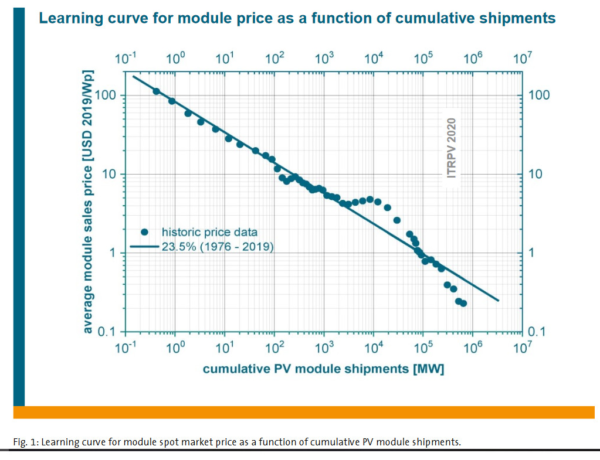
The chart above shows the price of solar panels from 1976 through the end of 2019. Here, we see prices fall by more than 99.8% from over $100 per Watt down to nearly 20¢ per Watt.
Below, we see the price of battery packs starting in 2010 and ending in 2020, per Bloomberg New Energy Finance. Here, we see costs fall from $1,191/kWh to $137/kWh, a price decrease of greater than 88%.
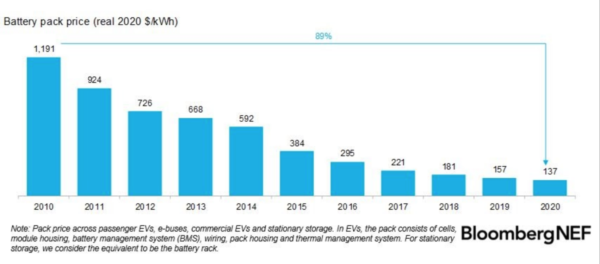
In both cases, we can expect the prices to continue trending downward in both the middle and long term.
And so, what can we expect to pay when we replace a nuclear power plant with solar power plus batteries?
$30 billion to spend
The new Vogtle reactors are rated at 1.117 GW each. Roughly, they’ll run at a 90% capacity factor. On an annual basis, the two units will generate 17.6 billion carbon-free kilowatt hours of electricity. Already on site are two earlier nuclear units, #1 and #2, which have been running since 1987 and 1989.
To generate that volume of electricity from solar power on an annual basis, Georgia would need about 7.3 GWdc of solar panels running at a 26% capacity factor. That would be equivalent to roughly 7% of the current U.S. installed solar capacity, which currently sits at just over 100 GW.
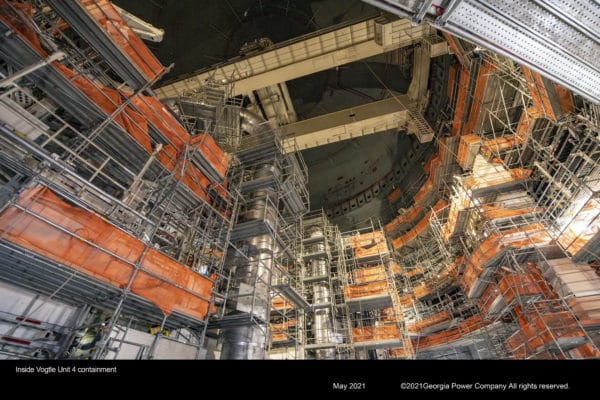
Image: Georgia Power
However, this 7.3 GWdc figure does not take into account battery charging losses or reduced sunlight in winter. So let’s offset battery charging losses by upsizing two thirds of the solar (the amount to be stored) by 20%. Next, let’s account for reduced winter sunlight by increasing the total system capacity by another 20%.
The resulting total capacity is now 10.55 GWdc of solar power.
In order to replace the two nuclear plants while the sun is down, the batteries would need to replicate two 1.117 GW power sources for 16 hours. The total energy storage capacity would be 39.3 GWh, after we add an extra 10% for safe measure.
Roughly speaking, the total cost of these solar-plus-storage facilities would be:
- $8.4 billion for 10.55 GWdc of solar power, fully installed at 80¢/watt
- $527 million for hypothetical power grid upgrades at 5¢/Watt
- $7.8 billion for 39.3 GWh of energy storage fully installed at $200/kWh
- Around $16.8 billion grand total, no incentives
So, Georgia, pv magazine USA just saved you more than $13 billion (as of today anyway).
Some asides and caveats…
It’s almost certain that a solar facility of this magnitude – roughly 27,000 acres or around 0.07% of Georgia’s land are – would be split among many landowners in the state. If land lease rates in Georgia are comparable to what might be earned in Pennsylvania, the project could provide as much as $27 million per year in income to Georgia landowners for decades to come.
Furthermore, the solar power plants would start generating electricity and revenue within about three years of the first signature, and two years after groundbreaking. The new Vogtle reactors began construction in 2013 (planning began much earlier), and are projected to complete in 2022/2023.
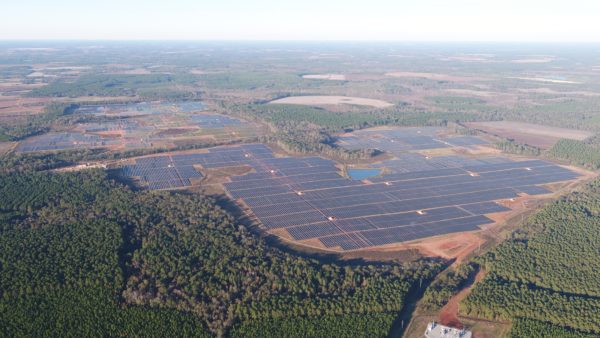
Image: Silicon Ranch
The nuclear facility will easily last 40 years, and potentially as long as 80. However, the ongoing operations and maintenance costs are significant, as well as upgrades and equipment replacements that start to become necessary after 40 years. And sometimes, those $1 billion dollar upgrades go wrong, and a nuclear power plant gets trashed.
With these considerations in mind, the repowering costs to get a solar+storage facility to a 40-80-year lifetime would likely be offset by the fact that the solar facility will enter service at least eight years earlier than the equivalent nuclear site. Additionally, during the solar plant’s operating lifetimes, it saves massive amounts of regular operations and maintenance costs, as well as specialist engineer labor costs.
When we do repower the batteries and solar panels, they almost certainly will be cheaper, and operate at a higher efficiency, likely stretching the life of the solar facility to 50+ years. Again, this solar+storage facility would generate 20% more juice in the summer (when the power is needed most in Georgia) because we oversized it for the winter.
In the end, it would be best if we had a healthy ecosystem of clean energy generation systems that include nuclear. However, if we’re going to debate the costs of nukes vs. solar, then it is no longer a discussion.
This content is protected by copyright and may not be reused. If you want to cooperate with us and would like to reuse some of our content, please contact: editors@pv-magazine.com.
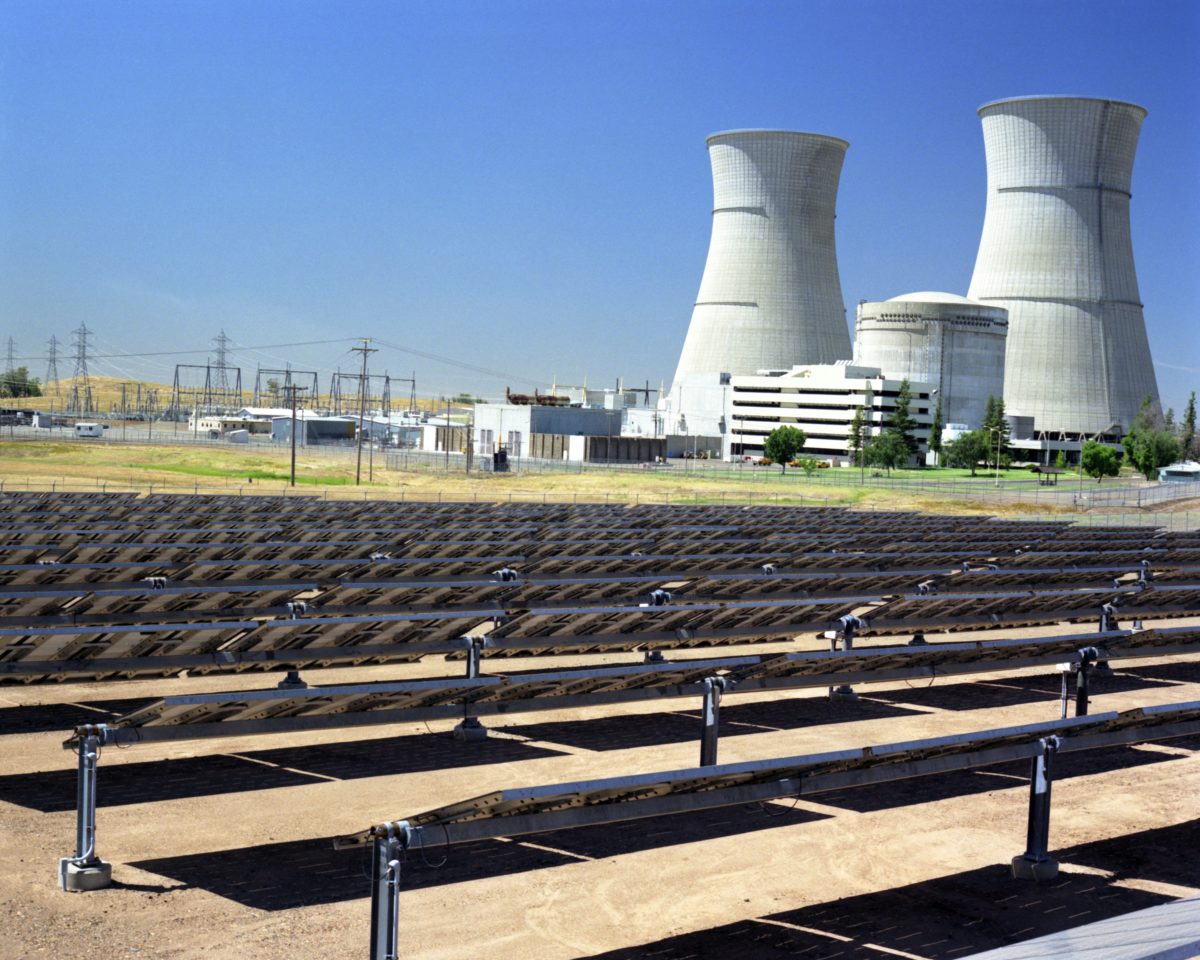







Excellent piece. Thanks.
We put 6 solar panels on our house in 2020. Our electric bill went from about $200 a month to $50-60. Best investment we ever made.
I like your results. What state do you live in?
If roughly half the generation was provided from wind which is stronger in winter and obviously at night together with half from solar there would be less need for both overcapacity and storage. Three GW of wind and 5 GW of solar would provide annual output of around 22 TWh allowing for storage losses for a capital cost of about $11 bn and still have reserves for off-years. Adding 2.2 GW of storage for 4 hours from batteries and 1.6 GW of off-river pumped hydro storage for 12 hours would get through 95% of any known low wind+solar periods and cost about $2.5 bn. Total cost only $13.5 bn. The nuclear system uses 40 GL of water per year, the renewable system probably about 0.2 GL
Yes, that’s the way the analysis usually goes, although the mix in any particular locale depends upon local conditions and shape of the demand curves. See https://www.rethinkx.com/energy
Good news.
Also have a look at the Europeans and how they integrate solar, wind, gas, biomass and geothermal with various storage solutions to provide solutions for various energy needs.
Nice article. Just to add two points
1. Shut down costs and waste storage are never counted in the project’s cost numbers for nuclear.
2. As an investment banker I am very focused on risk, especially “fat tail risk.” If you look at it purely from an investment RISK point of view, even a risk (building a nuclear plant) is only 1%, it is too high given the catastrophic damage and cost associated with this low probability event happening. Using unbiased and real numbers, there is no way to justify the RISK.
Please tell me how is solar power going to keep the grid stable 24/7-365. If nuclear generation goes away it will be natural gas and coal generation that will keep the grid stable. If we have only solar and wind generation, be prepared for rolling brownouts and blackouts.
Don’t want nuclear to go away Ronlad, but we’re ready if it does.
There are two ways for solar to stabilise the grid. First when it is operating you need probably 35-50% more than peak annual demand to ensure there is enough power on the highest demand day. All grids operate like this just for example in 2010 Germany had about 110 GW of dispatchable power + 44 GW of wind and solar and 15GW of import capacity to meet 80GW of peak demand, so at any time when demand is less than instantaneously available production some solar plants are deliberately curtailed, then if fault occurs or load jumps or falls those plant can instantly be scaled up or down.
Second while no one would ever really build an all-solar grid, from about two hours after sunrise to two hours before sunset, the solar system would have to deliver more power than is being consumed. Between 10 and 2 solar time it would have to deliver three to five times average hourly demand. The excess will be stored; stability is assured by modulating the flows in and out of storage. Then, once storage is providing the power from thousands or more likely millions of different storage systems, they all respond within milliseconds to changes in demand or supply to maintain local voltage and frequency. If demand exceeds local capacity, regional storage steps in in a 4- or 5-layer system.
The beauty of an inverter-based system (whether solar or batteries) is it can respond in milliseconds from -100% (storage) to +100% delivery in 2/10ths of a second. Inertia on a gas or coal turbine provides about 2-4% of capacity for 1-10 seconds, then the thermal system ramps at 1-10% per minute.
Yes, overbuild is a viable strategy, depending upon perceived land constraints. (There are no actual land constraints, just various flavors of NIMBYism.) If open spaces are not acceptable, then more is needed on rooftops and car parks, even if these are 8x more expensive per kWh.
Ironically, in areas with wind, land-based wind turbines are much easier on open lands and forests, even though some dislike their looks intensely.
There may be exceptions (Saudi Arabia?) but most temperate region packages entail combinations of land wind and solar with some storage. Offshore wind is also more expensive than land-based wind, but apart from needing to bring the generation to population centers using cables or transmission, wind there tends to be plentiful, particularly under the conditions which are worst for solar.
(*) I tend to consider wind generation another form of solar energy as it is differential air and land heating by insolation which produces it.
I cannot see how we are prepared if nuclear goes away. Please explain.
See above article that I just wrote Ronald.
The article does not mention uranium mining and the damage it does, nuclear energy waste costs for long term secure storage or the risk of a nuclear accident. When you add those into the mix it is a no brainer. Solar and wind are better, cheaper, faster and safer to operate.
Does this analysis take into account the cost of leasing all the required land? It makes no sense to me for battery backup on the grid. Especially with the growing demands of EVs
“Leasing the required land” assumes revenue-participating deals can’t be struck with the landowners, very like the ones negotiated for wind turbines in upstate New York or natural gas wells.
Also, if this is ever going to be a national priority, and it may not, then something like the Natural Gas Act of 1938 is appropriate. That Act allows energy providers to use eminent domain to take lands for production, with negotiated prices. The continuing hypocrisy of treating wind and solar and storage differently to fossil fuel production is amazing, including among so-called environmentalists.
Yes it does Chuck. It is accounted for in the price per kWh – it’s about 2-4 tenths of a cent per kWh
The battery banks presumably need to be replaced 4-8 times during the life of a nuclear plant. Even at diminishing costs, this is so significant I can’t see why it doesn’t undo the analysis.